New computer simulations suggest the first magnetic fields that emerged after the Big Bang were much weaker than expected — containing the equivalent magnetic energy of a human brain.
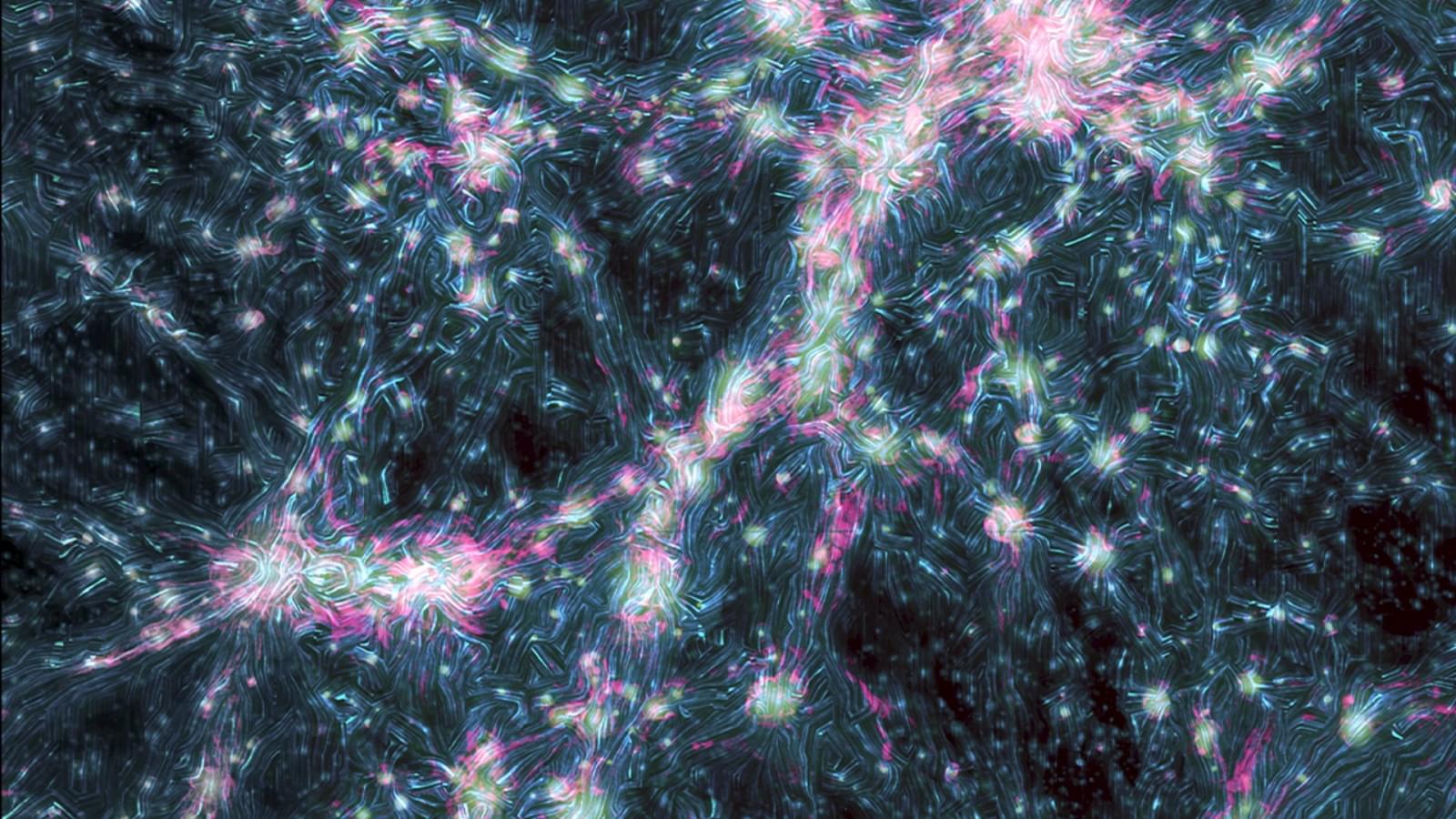

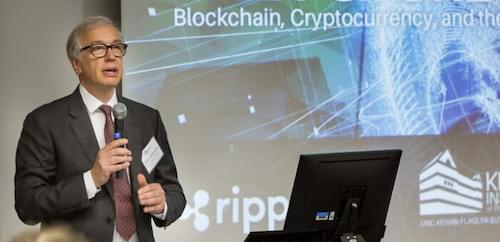
Eric Ghysels made a name for himself in financial econometrics and time-series analysis. Now he translates financial models into quantum algorithms.
Economist Eric Ghysels has spent most of his career fascinated by a fundamental problem in the financial industry: figuring out how to put a price on any financial asset whose future value depends on market conditions. Ghysels, a professor at the University of North Carolina at Chapel Hill, has now set himself a new problem: studying the impact that quantum computing could have on solving asset pricing, portfolio optimization, and other computationally intensive financial problems.
He admits that nobody knows when quantum computers will have commercially viable applications, but, he says, it’s important to invest now. Physics Magazine spoke with Ghysels to learn why.

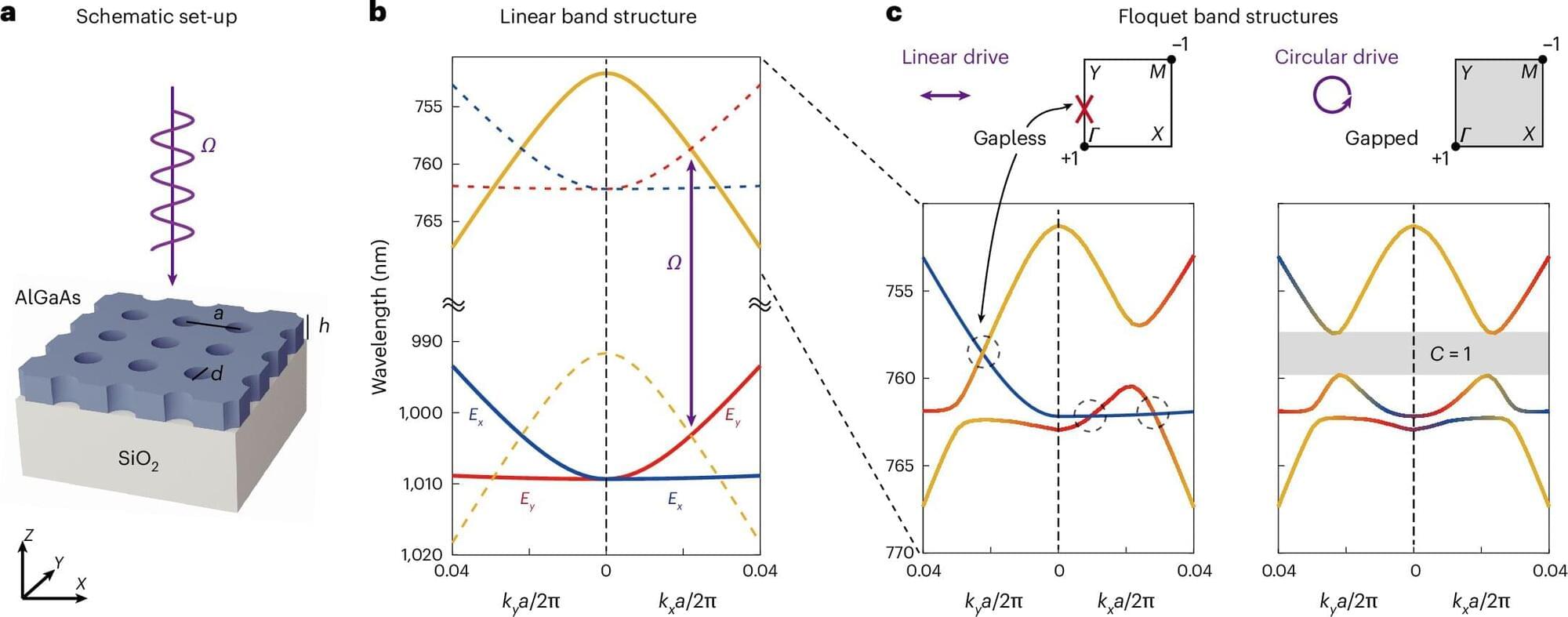
Relaying a message from point A to B can be as simple as flashing a thumbs-up at a stranger in an intersection, signaling them to proceed—nonverbal, clear, and universally understood. But light-based communication is rarely that straightforward.
Photons, tiny particles of light, are fragile and unpredictable. Unlike electrons, which must be conserved in circuits, photons can scatter, split, merge into different colors, or be absorbed, meaning that the number of photons in a system isn’t fixed, even while the energy they carry remains the same. This makes guiding them through fiber optics or photonic chips —optical mazes—far trickier than steering electrons through copper wires, because light signals can scatter into dead ends or vanish before reaching their destination.
Engineers often respond by obsessively refining every imperfection, polishing the maze to perfection. However, this approach can be exhausting and never fully addresses these limitations.
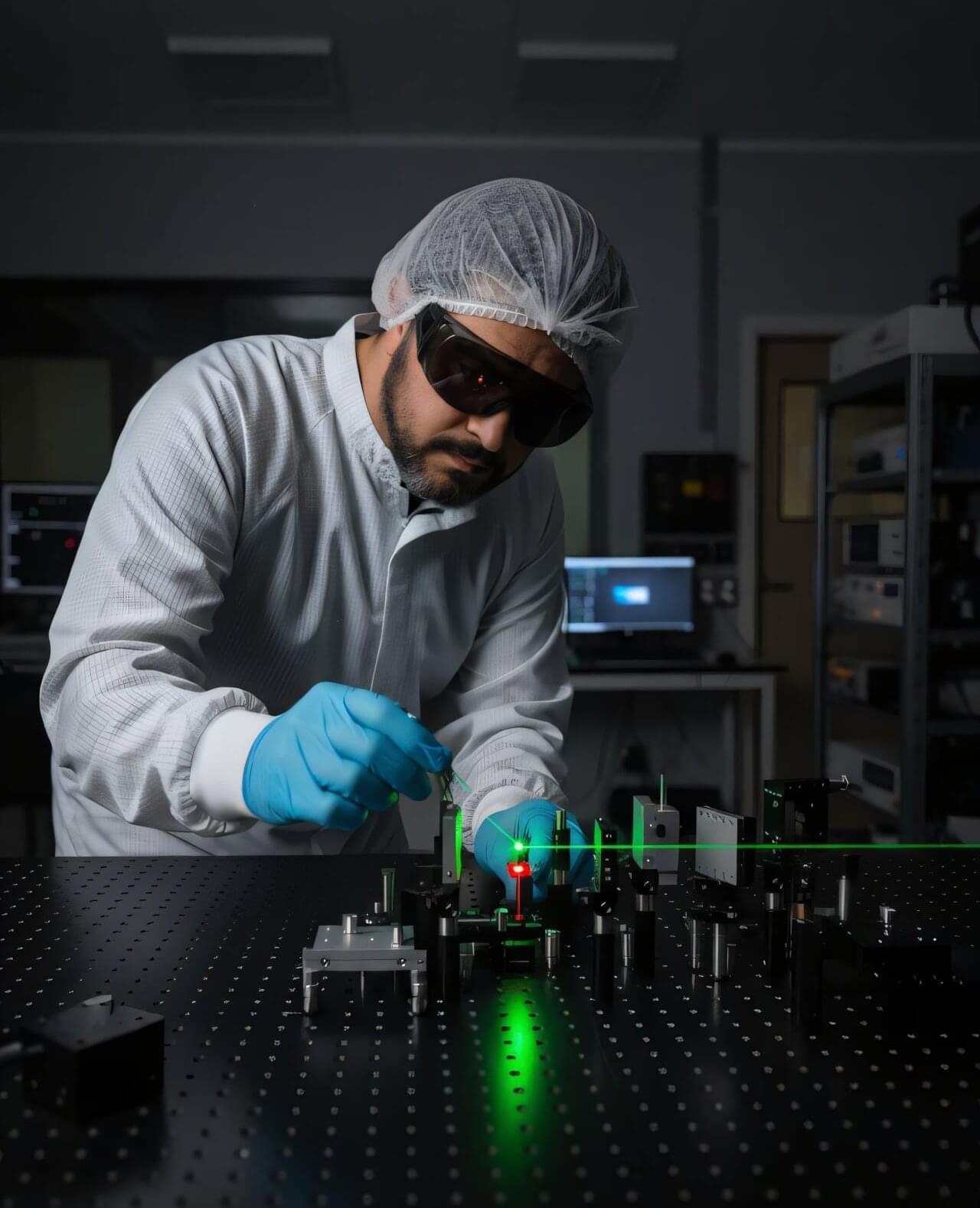
The iridescent blue of butterfly wings has inspired researchers to find a solution to a challenge previously considered insurmountable—dynamically tuning advanced optical processes at visible wavelengths.
The result is a patterned layer of material a fraction of the thickness of a hair, that could underpin radical new optical technology: applications of the technology are diverse, ranging from adaptive camouflage, through biosensing to quantum light engines for on-chip computing and secure communications.
The research is published in Science Advances. The first author is Dr. Mudassar Nauman, from the ARC Center of Excellence for Transformative Meta-Optical Systems (TMOS) and BluGlass Ltd.
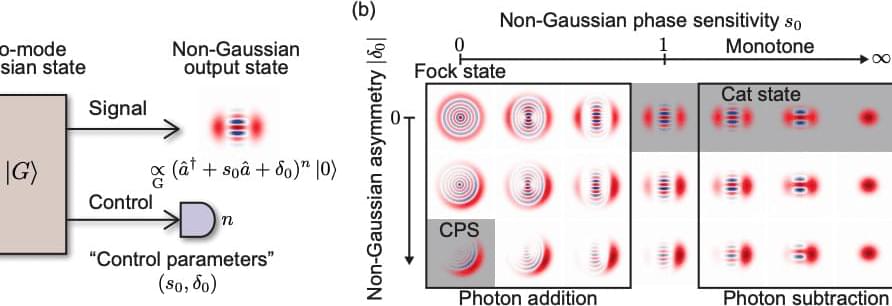
Non-Gaussian states of light represent a crucial component for advancements in quantum technologies, holding immense potential for universal computation, robust error correction, and highly sensitive sensing, yet creating these states remains a significant challenge. Fumiya Hanamura, Kan Takase, and Hironari Nagayoshi, along with their colleagues, now present a new approach to overcome these hurdles, introducing ‘non-Gaussian control parameters’ that offer a more effective way to measure and optimise the generation of these complex states. This method moves beyond traditional benchmarks, such as stellar rank, by providing a continuous and practical measure of non-Gaussianity, and importantly, dramatically reduces the resources needed for successful state creation. Demonstrations across a range of states, including cat states and GKP states, reveal that this technique cuts required photon detections by a factor of three and boosts preparation probability, paving the way for more feasible and scalable quantum technologies and fault-tolerant computation.
Researchers have developed a new method for generating complex states of light that significantly reduces the resources needed for advanced technologies like quantum computing and sensing, achieving a threefold reduction in required measurements and a substantial increase in success rates across various light states.
“An equation, perhaps no more than one inch long, that would allow us to, quote, ‘Read the mind of God.’”
Up next, Michio Kaku: The Universe in a Nutshell (Full Presentation) ► • Michio Kaku: The Universe in a Nutshell (F…
What if everything we know about computing is on the verge of collapsing? Physicist Michio Kaku explores the next wave that could render traditional tech obsolete: Quantum computing.
Quantum computers, Kaku argues, could unlock the secrets of life itself: and could allow us to finally advance Albert Einstein’s quest for a theory of everything.
00:00:00 Quantum computing and Michio’s book Quantum Supremacy00:01:19 Einstein’s unfinished theory.
00:03:45 String theory as the \.

A detailed conformational analysis of N-substituted bispidines has been performed to determine the factors governing the restricted rotational motion induced by the substituents. This investigation combines computational studies of the transition state involved in the rotation with experimental characterization of the rotamers arising from the restricted rotation.
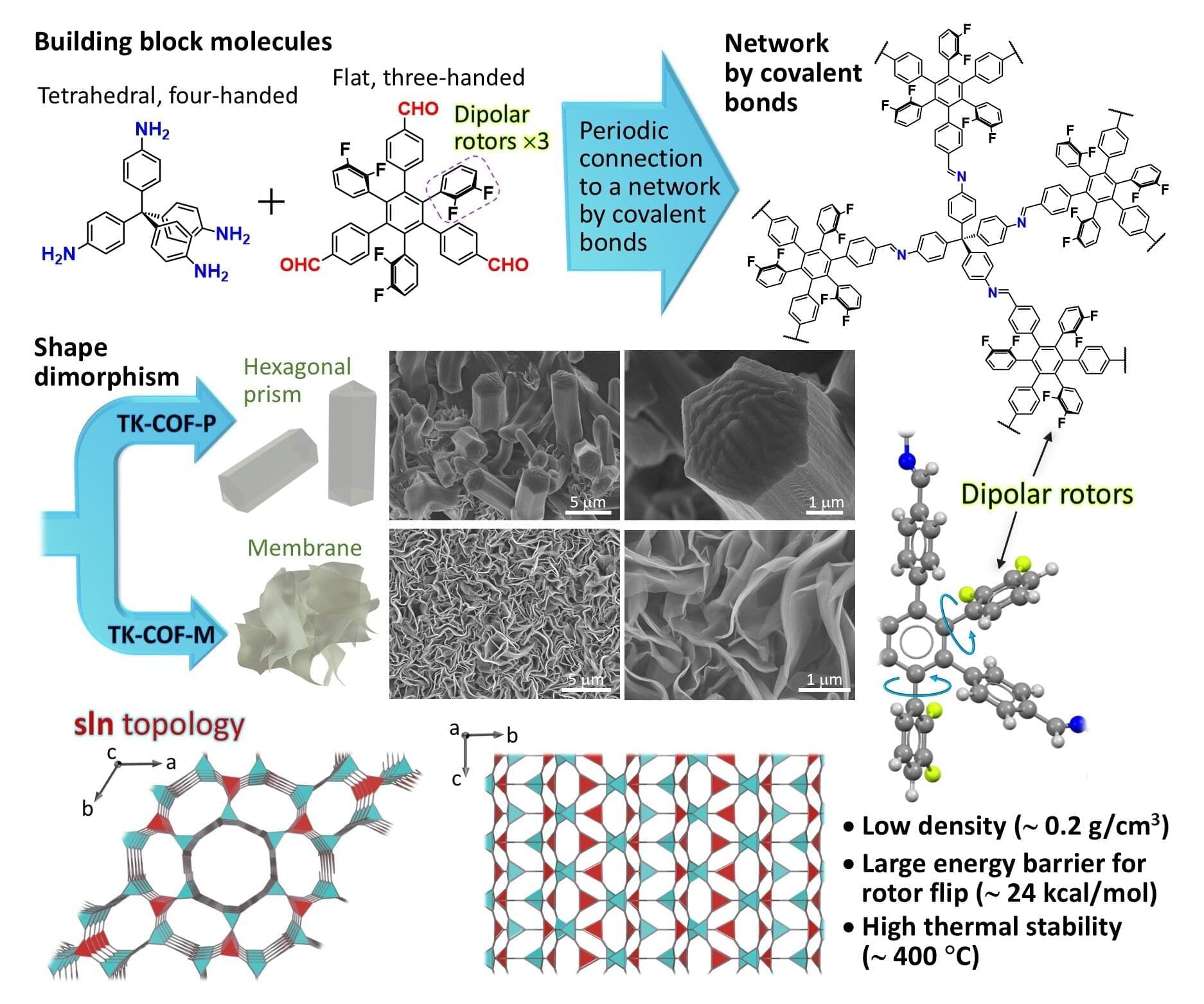
Researchers at Institute of Science Tokyo have created a new material platform for non-volatile memories using covalent organic frameworks (COFs), which are crystalline solids with high thermal stability. The researchers successfully installed electric-field-responsive dipolar rotors into COFs.
Due to the unique structure of the COFs, the dipolar rotors can flip in response to an electric field without being hampered by a steric hindrance from the surroundings, and their orientation can be held at ambient temperature for a long time, which are necessary conditions for non-volatile memories. The study is published in the Journal of the American Chemical Society.
Humans have made great efforts to record information by inventing recording media such as clay, paper, compact disks, and semiconductor memories. As the physical entity that holds information—such as indentations, characters, pits, or transistors—becomes smaller and its areal density becomes higher, the information is stored with higher density. In rewritable memories, the class called “non-volatile memories” are suitable for storing data for a long time, such as for days and years.
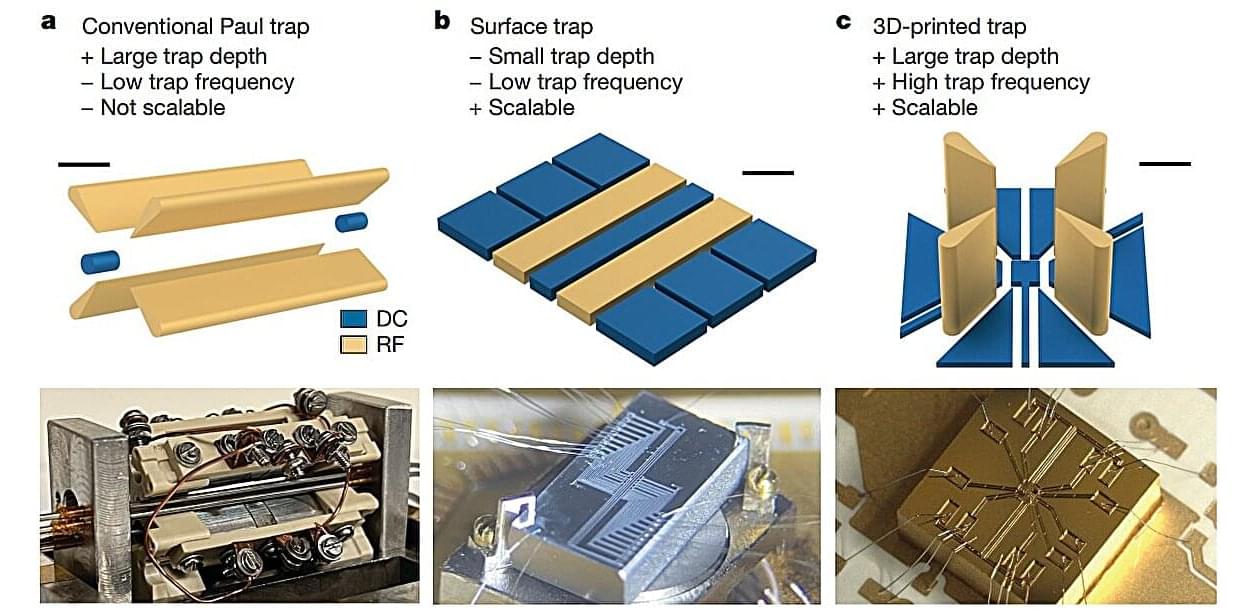
The existing bottleneck in efficiently miniaturizing components for quantum computers could be eased with the help of 3D printing.
Quantum computers tackle massive computational challenges by harnessing the power of countless tiny parts working seamlessly together. Trapped ion technology, where charged particles like ions are trapped by manipulating the electromagnetic fields, is one such component.
Current microfabrication techniques fall short when it comes to producing the complex electrode structures with optimal ion confinement suitable for quantum operations.